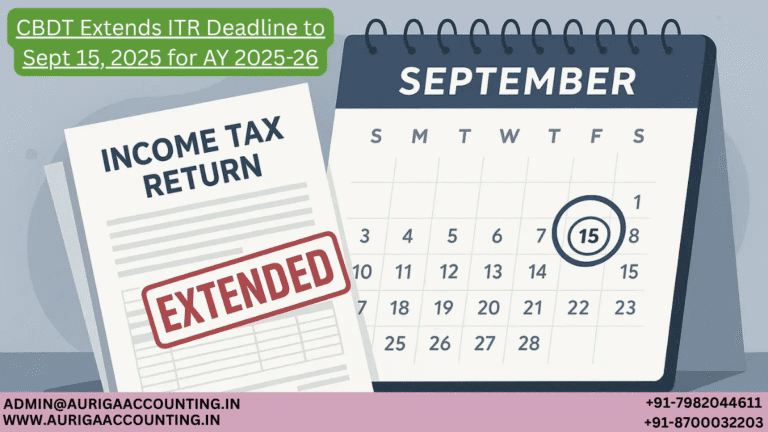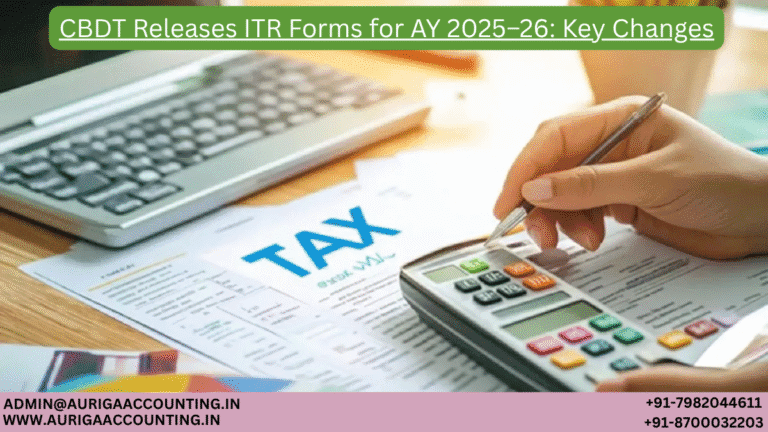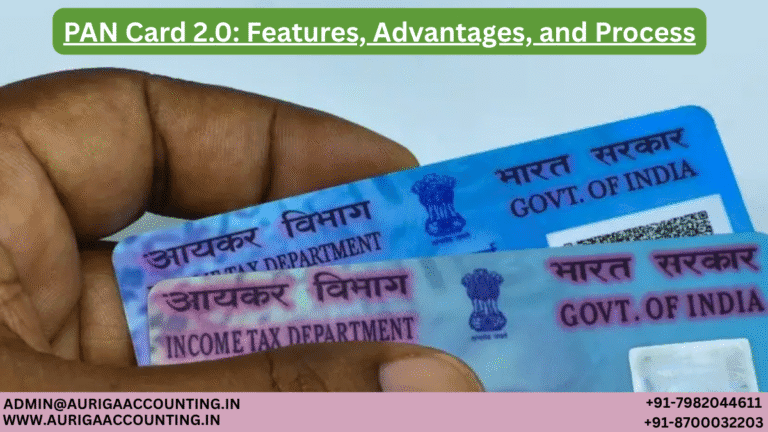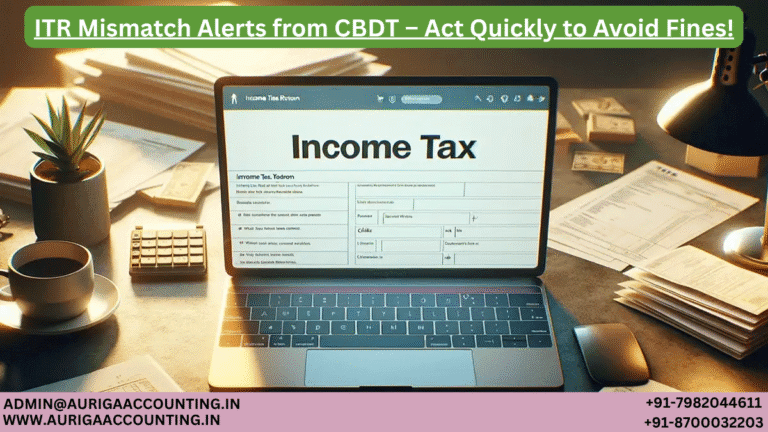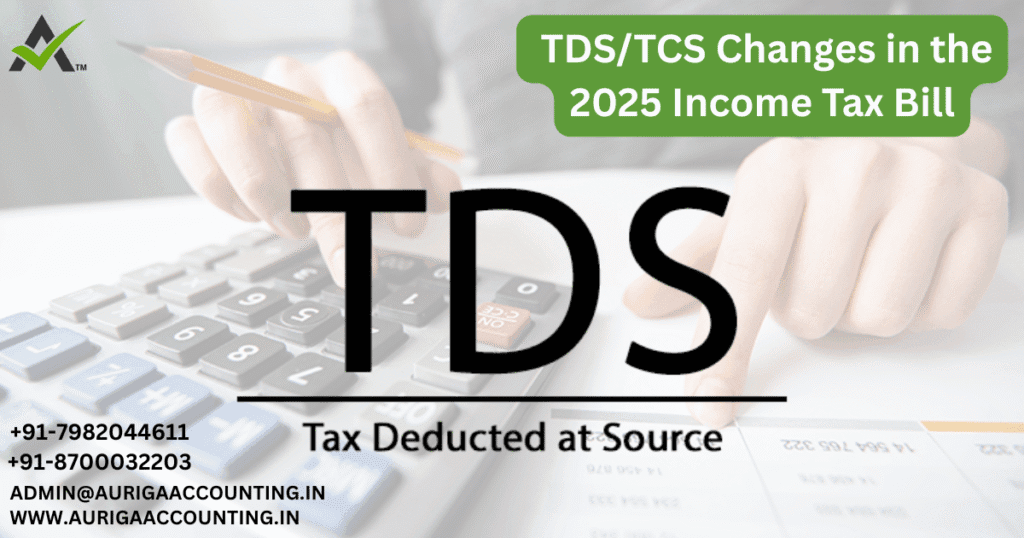
TDS/TCS Changes in the 2025 Income Tax Bill
Introduction
ToggleThe Income Tax Bill 2025, recently introduced in Parliament, brings substantial updates to the provisions governing Tax Deducted at Source (TDS) and Tax Collected at Source (TCS). These proposed changes are aimed at simplifying the overall deduction and collection framework, promoting greater clarity and compliance for individuals, businesses, and tax professionals alike.
If you’ve ever felt overwhelmed by the numerous TDS sections or unsure about the applicability of TCS, this guide is here to help. We’ll break down the major updates, explain their impact, and highlight what they mean for various types of taxpayers — all in straightforward terms
Understanding TDS & TCS
Before we look at the recent changes, it’s important to understand what TDS and TCS actually mean.
Tax Deducted at Source (TDS)
TDS is a system where tax is deducted before making a payment. This helps the government collect taxes in advance, rather than waiting for taxpayers to pay at the end of the financial year.
Example:
If a bank pays you ₹10,000 as interest on a fixed deposit, it will deduct 10% TDS (₹1,000) and deposit ₹9,000 into your account. The ₹1,000 deducted is sent to the tax department and adjusted when you file your income tax return.
TDS is commonly deducted from salaries, professional fees, rent, commissions, interest income, contract payments, and more.
Tax Collected at Source (TCS)
TCS works differently. Instead of the payer deducting tax, the seller collects tax from the buyer on certain goods and services.
Example:
When you buy a car worth ₹12 lakh, the dealer collects 1% TCS (₹12,000) from you and deposits it with the tax authorities.
TCS applies to sales of vehicles, minerals, liquor, scrap, foreign remittances, and other specific transactions
Changes in TDS/TCS Under the New Income Tax Bill
Under the current Income Tax Act, 1961, there are 43 different sections that regulate various aspects of TDS. These sections vary based on factors like the payer’s or payee’s status and the applicable monetary limits, with different tax deduction rates specified for each.
The proposed Income Tax Bill simplifies this by consolidating all these provisions into a single section—Section 393. This new section includes three distinct tables that categorize payees as:
Residents
Non-residents
Any person
Each table clearly outlines:
The type of income or payment
The applicable monetary threshold
The payer or person responsible for deducting tax
The TDS rate to be applied
For resident payees, similar payment types have been grouped together, such as commission payments, rent, interest, and income from capital markets. There is also a separate exemption table that lists cases where TDS deduction is not required.
Similarly, the rules for TCS have been streamlined under Section 394 of the new bill. This section contains a single table detailing:
Types of receipts subject to TCS
Monetary thresholds
The person responsible for collecting TCS
Applicable TCS rates
Conditions for exemption from TCS
Additionally, provisions that were earlier scattered across multiple sections have now been grouped into dedicated sections for greater clarity, including:
Certificates for lower deduction or collection
Compliance and reporting requirements (such as filing statements)
Penalties for failing to deduct, collect, or pay TDS/TCS
Processing of TDS/TCS statements
This restructuring significantly reduces complexity and streamlines the law
Reduction in Sections and Word Count
The proposed Income Tax Bill has dramatically simplified the TDS and TCS provisions:
Number of sections:
Existing Income Tax Act, 1961: 69 sections
Proposed Income Tax Bill: 13 sections
Word count:
Existing Act: 27,452 words
Proposed Bill: 14,675 words
This significant reduction in both sections and length makes the new bill much easier to understand and comply with
TDS/TCS Rates in the New Income Tax Bill
The TDS and TCS rates, along with the monetary thresholds, remain the same as those outlined in the Income Tax Act, 1961 (updated through the Finance Bill, 2025).
Key TDS Rates:
Salaries: As per applicable income tax slabs
Interest Income: 10%
Rent (above ₹2.4 lakh per year): 10%
Professional Fees (above ₹30,000): 10%
Commission (above ₹15,000): 5%
Key TCS Rates:
Sale of motor vehicles (above ₹10 lakh): 1%
Foreign remittances (above ₹7 lakh): 5%
Sale of minerals, liquor, scrap, and similar items: 1% to 5%
Compliance Rules Standardized for All
Previously, penalties, refunds, and exemption rules varied across different sections. Now, a uniform set of rules applies to all.
Lower TDS/TCS Certificate Requests: Handled through a single streamlined process
Penalty for Non-Compliance: 1% interest per month on any outstanding TDS/TCS amounts
Late Filing Consequences: Incorrect or delayed TDS returns can result in penalties and possible prosecution
Why does this matter?
There’s no longer a need to navigate multiple sets of rules, making compliance simpler and reducing hassles for both businesses and individuals
Key TDS/TCS Changes Every Taxpayer Should Know
For Salaried Individuals:
No change in how TDS is deducted from salaries—your employer will continue to deduct tax according to existing income slabs.
Filing tax returns is now easier since all salary-related TDS falls under a single section (Section 392).
For Businesses & Professionals:
Reduced paperwork with no need to refer to multiple sections for different TDS rates.
Simplified compliance as refunds, penalties, and exemptions follow uniform rules.
Faster and clearer tax filing thanks to consolidated TDS and TCS tables.
For Investors & Other Taxpayers:
TDS rates on interest, rent, and professional fees remain unchanged.
Improved clarity and ease of understanding TDS and TCS when conducting transactions
About the Author
Priya
Priya is an expert writer skilled at simplifying complex legal topics into clear, practical guidance. Her work empowers entrepreneurs by equipping them with the essential knowledge to navigate business laws confidently, helping them successfully launch and manage their ventures



